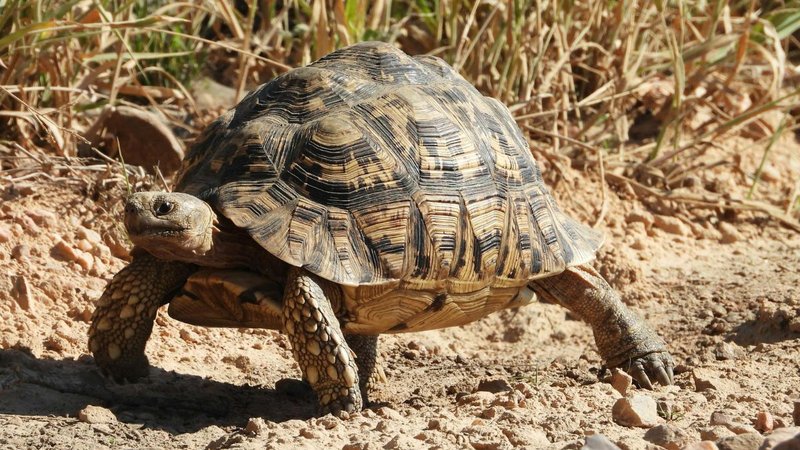
Imagine sitting back with a warm cup of coffee, chatting about these enchanting reptiles. You might start to wonder what makes them tick—what secrets do they hold? Let’s dive into some of the most captivating facts about tortoises that will leave you in awe of these ancient beings.
1. Tortoises Are Ancient Creatures
Tortoises have been around for a long time—over 200 million years! That’s right; they existed alongside dinosaurs. Their long history makes them one of the oldest living species on Earth. Think of it like this: if you could time travel to the age of dinosaurs, you’d spot tortoises slowly roaming the land, just as they do today.
Their slow evolution means they’ve adapted well to various environments. From arid deserts to lush forests, tortoises have found ways to survive and thrive. In fact, fossils show that tortoises have gone through significant changes while still maintaining their basic shell and body structure. This resilience is why they remain a vital part of ecosystems, even after all these years.
2. They Have Hard Shells for Protection
You’ve probably noticed that tortoises have those hard, protective shells. But did you know that their shells are not just for looks? These shells are essential for their survival. They’re made of bone and covered with a tough layer called scutes. When threatened, tortoises can retract into their shells, becoming a fortress against predators.
Besides protection, the shell also plays a role in regulating their temperature. If it gets too hot or too cold, a tortoise can find shade or sunlight and adjust its position. It’s like wearing a natural, built-in climate control system!
3. Tortoises Are Herbivores
Here’s the thing: tortoises are primarily herbivores, which means they munch on plants all day long. Their diets typically consist of grasses, leaves, and fruits. This plant-based diet is crucial for their health, particularly because tortoises have long digestive tracts that take time to break down fibrous plant material.
You might wonder, “Do they ever eat meat?” While some tortoise species may nibble on insects or carrion now and then, it’s rare. Their bodies are designed for a slow and steady intake of plant matter, which is why tortoises can go for long periods without food. A well-balanced diet helps them maintain their energy and good health, ensuring they live long lives.
4. Tortoises Can Live a Long Time
If you’re looking for a pet that ages like fine wine, a tortoise might just be your best bet. These creatures can live for decades, with some species reaching ages of over 100 years! This longevity is partly due to their slow metabolism, which means their bodies don’t wear out as quickly as faster-moving animals.
Some famous tortoises have made headlines because of their remarkable lifespans. Take, for example, Adwaita, a giant tortoise believed to have lived for over 250 years! When you think about it, deciding to adopt a tortoise is like signing up for a lifelong friendship.
5. They Have Unique Mating Rituals
Mating in tortoises can be quite the spectacle. When males are ready to breed, they often engage in some interesting courtship behaviors. You might see them nudging, biting, or even flipping each other over to show dominance. It’s like a slow-motion wrestling match!
Once the female decides on a mate, she’ll lay eggs, usually in a nest she digs in the ground. The number of eggs can vary, with some tortoises laying a handful while others may produce dozens in one go. After laying, the female leaves the eggs to incubate on their own. This hands-off parenting style is unique in the animal kingdom!
6. Tortoises Are Found Worldwide
Tortoises aren’t limited to one specific habitat; they can be found across many regions of the world. From the deserts of Africa to the islands of the Caribbean, tortoises have adapted to different environments. They thrive in both terrestrial and aquatic habitats, showcasing their adaptability.
One famous example is the Galápagos tortoise, which is native to the Galápagos Islands. Each island is home to a unique species of tortoise, which evolved to suit the specific conditions of its environment. This diversity adds to their charm and allure, making tortoises a symbol of biological richness.
7. They Communicate Differently
You might be wondering how tortoises get their point across since they don’t make much noise. While they might not bark or chirp, tortoises do communicate using body language and subtle sounds. For example, during mating, males will often make low-pitched sounds to attract females.
They also use postures and movements to express emotions. For instance, a tortoise might lift its head high to assert dominance or retract into its shell when feeling threatened. So, even though they’re quiet, these creatures have their own way of speaking!
8. Some Tortoises are Endangered
It’s sad but true: many tortoise species face threats due to habitat loss, poaching, and climate change. The wild populations of tortoises are dwindling, making conservation efforts critical. Organizations worldwide are working to protect these magnificent animals through breeding programs and habitat preservation.
Visiting a local wildlife sanctuary or supporting conservation projects can make a difference. By learning more about tortoises, you can help raise awareness and contribute to the efforts to ensure these ancient creatures continue to thrive.
9. Tortoises Are Terrific at Digging
It might surprise you to learn that tortoises are quite skilled diggers. Their strong legs and sharp claws enable them to burrow into the ground for shelter. They often dig to escape the heat or find a cool spot to rest.
In colder climates, some tortoises even hibernate by burrowing deep into the ground. This hibernation helps them conserve energy during harsh weather conditions. It’s like hitting the snooze button on life for a few months!
10. Tortoises Inspire Myths and Culture
Throughout history, tortoises have held significant meaning in various cultures. They often symbolize wisdom, longevity, and stability. In many stories and folklore, the tortoise is the underdog that triumphs over faster animals. Take the classic tale of the “Tortoise and the Hare,” for example—it teaches a valuable lesson about perseverance and patience.
These themes have made tortoises a beloved subject in art, literature, and even ancient mythology. Such cultural significance reminds us of the importance of preserving these remarkable animals and appreciating their contributions to our world.
In conclusion, tortoises are more than just slow-moving reptiles; they are ancient survivors with unique adaptations and fascinating lifestyles. From their long lifespans to their essential role in ecosystems, they remind us of the beauty and complexity of nature. The next time you see a tortoise, you might just appreciate it a little more—after all, it carries a piece of history on its back!

